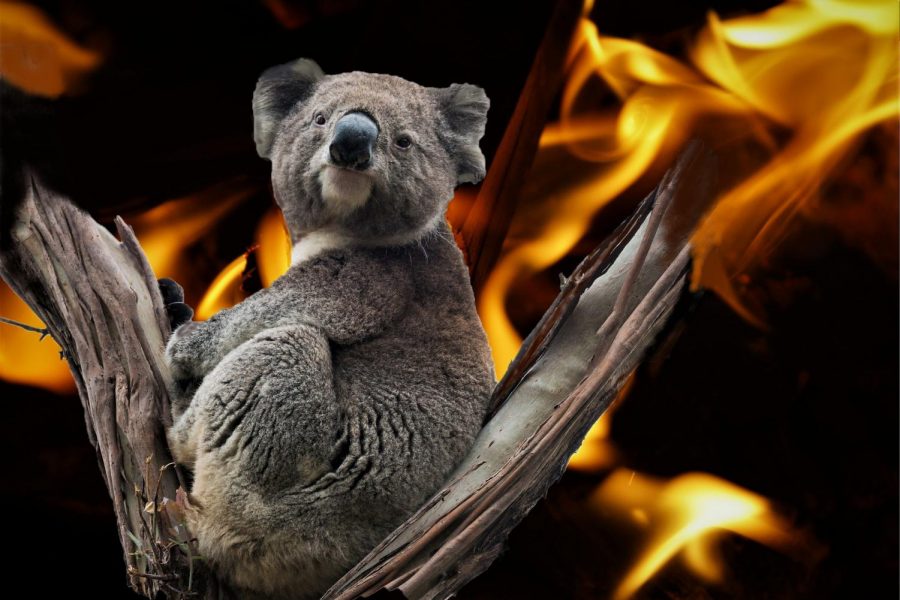Australian bush fires continue to devastate the country
Jan 29, 2020
Dalilia Jakupovic, a Slovenian tennis player, doubled over in a coughing fit during an Australian Open match against Swiss player Steganie Vogle on Jan. 13. The match was cancelled because of Jakupovic’s extreme coughing fit. The highly decorated player was escorted off the court in front of broadcasting ESPN Australia and New Zealand. This shocking and embarrassing incident was caused by the devastating pollution from the intense Australian bush fires.
The blazes began in September of 2018 as a result of high temperatures, strong winds and an unprecedented drought. The Australian Bureau of Meteorology states that 2019 was the hottest year in Australia, reporting a 1.5 degrees Celsius increase in temperature. On Jan. 11, two major wildfires merged into one enormous blaze in the populated southeast of the country. Griffith University Ecologist Roger Kitching told the A.P. that wildfires typically burn scattered patches in the bush, leaving areas of unburnt territory for animal and plant life to take shelter in unburnt foliage.
Typically these patches of unburnt land are more humid which prevents wildfires from spreading. Contrary to the normal behavior of wildfires, these massive infernos have consumed much of the animals’ habitat, leaving little to no shelter for them. These fires also spawn massive storms that damper the fire’s effects with rainfall, but can cause structural damage to houses and other buildings with hail and flooding. These storms can cause increased lightening strikes which multiply the number of wildfires. According to the New York Times, 24 people have been killed and 2,000 homes have been destroyed. Environment Minister Sussan Ley told the Australian Broadcasting Corporation that an estimated 30% of koalas in New South Wales have died. Endangered species, such as the glossy black cockatoos, are now feared to be extinct.
Nick Kavalec ‘21 told The Carroll News, “Even though [the fires are] so far away, you realize how much of an impact we can have. It’s not just about what you do that affects nearby, but that every action you take affects the globe. The first thing I always try to do is be as informed as I can. I do a lot locally with groups [to] inform us about and [how we can] support the Great Lakes.”
To protect endangered plants, ecologists are harvesting seeds from endangered areas. Aboriginal people in the northern area of Australia have been practicing defensive burning, which utilizes setting smaller fires to burn out the flammable underbrush that fuels the majority of the wildfires. According to the New York Times, these Aboriginal practices have gained scientific backing and could be a path to making the path of wildfires more predictable and contained in the future.













